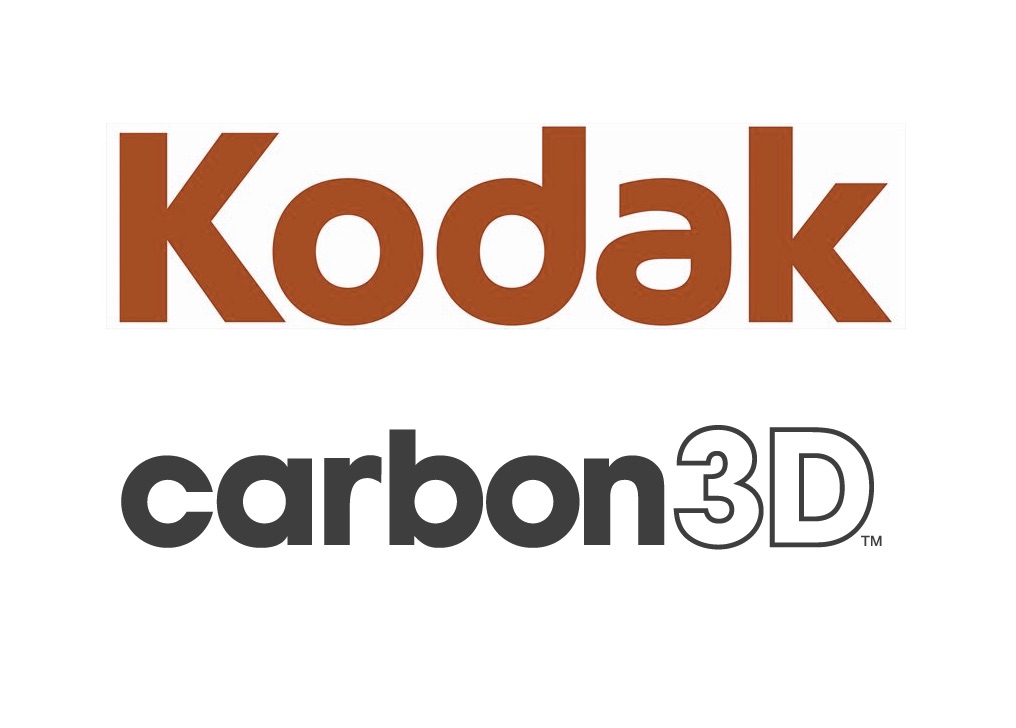Carbon’s latest move suggests their real ambition could be materials, not 3D printing.
First, the announcement: the new 3D printing company signed a joint development agreement with none other than Kodak to develop materials for use in Carbon’s CLIP technology machines.
Kodak is, as you know, a very large company that specializes in imaging. For decades, their forte was in the development of cameras and film, but in recent years they’ve had to make the transition to digital imaging systems.
But they still have much expertise in chemistry, as they required such for creation of camera film. Now it seems that some of that expertise is being turned towards the problem of 3D printing resin, specifically for use in Carbon’s systems.
Kodak CEO Jeff Clarke said:
Together, Carbon and Kodak are well positioned to develop and expand market opportunities for CLIP-based additive manufacturing.
And this makes sense: although there are many types of 3D printer resin available today, the possibilities are almost limitless for future resin formulations. Many types of engineering properties can be met, as well as aesthetic properties.
For me, this announcement clears up some questions I had regarding Carbon’s future. While their CLIP technology is impressive, its major attribute, very fast resin 3D printing, is hardly unique. I’ve recently seen multiple other approaches that achieve similar speedy results, or even faster. So how could Carbon effectively compete when their print tech doesn’t have a unique functional advantage?
Their situation is (or soon will be) very similar to that facing Stratasys. For years Stratasys marketed expensive industrial 3D printing gear that was well received. Stratasys profited not only from the revenue of the machine itself, but also from the materials, as their machines were made to accept only Stratasys materials.
But then Stratasys’ patent on plastic extrusion-based 3D printing expired. Did their world fall apart?
Definitely not. Stratasys continues to sell their machines – and associated materials in good quantities. How is this so, when there are now less expensive plastic extrusion alternatives available?
The answer is that their industrial machines last a long time. Companies pay good money for them, and expect to write off that expense over the course of many years. While that machine is onsite, it must use Stratasys’ materials, generating ongoing revenue for Stratasys. Stratasys improves the situation by periodically introducing new materials for these machines, which must be obtained exclusively from Stratasys, like their introduction of Nylon materials a couple of years ago.
I think this is the model that Carbon is seeking. They’ve raised a significant amount of cash, apparently USD$140M, with which they intend to develop industrial-quality 3D printing equipment. The cash they have will enable them to develop very high-quality, high-reliability machines entirely suitable for continuous industrial use.
Now they’re partnering to develop exotic materials for industry’s use in those very machines.
Sounds a lot like Stratasys’ strategy, doesn’t it?
It is certain that Carbon’s machines will use some type of proprietary mechanism to accept resin, meaning you’ll have to buy it from Carbon at the price they set.
But that’s ok, because with this announcement, and presumably more in the future, Carbon will be providing a very interesting menu of industrial 3D printing resins to choose from.
Carbon: The Stratasys of Resin.
Via BusinessWire


